Poeschke Joachim: Italian Frescoes: The Age of Giotto 1280-1400

(fb2, 472 страницы, 2 401 Kb)
Жанр: Abbeville Press
Издательство: Abbeville Press, 2005
The fourth, but the earliest volume chronologically, of the only comprehensive survey in modern times of the surviving Italian frescoes from the end of the Middle Ages to the Renaissance and Mannerism, this groundbreaking oeuvre is an achievement in scholarship and publishing of the same magnitude as Abbeville's Art of Florence and Art and Spirit of Paris . Following the success of the previous volumes in this extraordinary series: Italian Frescoes: The Early Renaissance , Italian Frescoes: The Flowering of the Renaissance , and Italian Frescoes: The High Renaissance and Mannerism — Italian Frescoes: The Age of Giotto, 1280 — 1400 presents twenty-two outstanding fresco cycles. Created during the late thirteenth and early fourteenth centuries, these cycles set new standards for painting and an innovative vision of man, paving the way for the monumental achievements of the Renaissance. It was at this time that fresco painting was not only commissioned for churches and chapels, but also for such secular places as town halls and royal residences with humanist in addition to religious themes. The fresco cycles featured here include brilliant works by Giotto in Assisi, Padua, and Florence; dramatic paintings by Cimabue, thought to be Giotto's teacher; Pietro Cavillini in Rome; and the Sienese artists Simone Martini and Pietro and Ambrogio Lorenzetti — all of these works still visible on walls and ceilings of palaces and churches spanning Italy from the Veneto to Rome. The authors describe and illustrate such celebrated sites as the Church of Saint Francis in Assisi, the Chapel of the Scrovegni in Padua, the Public Palace in Siena, and the papal chapel, the Sancta Sanctorum, in Rome. Each of the twenty-two chapters is concise and authoritative, offering a descriptive and interpretive essay on all aspects of fresco painting, covering the artists and their patrons in the context of their cultural and political history. Each essay concludes with a diagram of the site, followed by a series of full- and double-page color plates showing the entire cycle, many reproduced from new photographs of recently restored frescoes. No publisher until now has attempted to gather together and document all the important fresco cycles of Italian art from the late thirteenth to the seventeenth centuries. While this volume is the predecessor to the previous books, Italian Frescoes: The Age of Giotto, 1280 — 1400 easily stands alone as a masterpiece of art and scholarship which will be welcomed by art historians and art lovers alike.